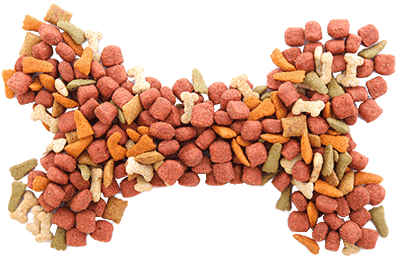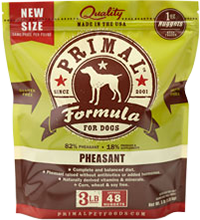A Healthy, Balanced Diet For Pets
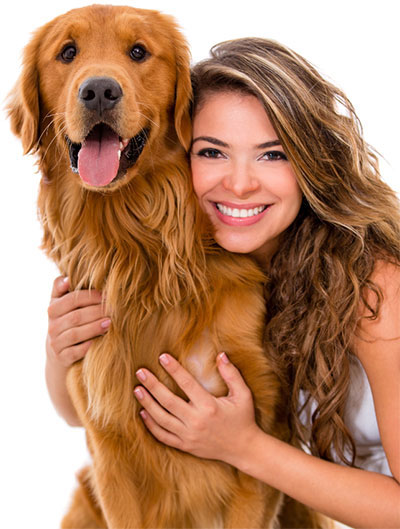 Just like us, our pets have nutritional needs for their well-being and good health. They rely on us for their food and treats, and choosing a high quality pet food is one of the biggest factors in their longevity and quality of life. For many pets, it is the difference between shinier vs. dull coats, skin issues, energy levels, allergies, and more serious health conditions.
Just like us, our pets have nutritional needs for their well-being and good health. They rely on us for their food and treats, and choosing a high quality pet food is one of the biggest factors in their longevity and quality of life. For many pets, it is the difference between shinier vs. dull coats, skin issues, energy levels, allergies, and more serious health conditions.
There are many good (and bad) pet food brands out there to choose from. My goal is not tell you which brand to buy, as that would be unfair and biased considering the many good brands to choose from, but rather to educate you on recognizing the bad ones so you can cross them off your list.
Why our pets are getting sicker...
Important Food Elements
Let's talk about the important elements of a healthy dog or cat food diet and learn some tips on making the best purchasing choices:
- It should consist of a high-quality protein (meat and/or fish).
- It should contain a small portion of fruits, veggies, and veggie starches (such as sweet potatoes or yams).
- It should have a high moisture content (around 70%).
- It should contain bone meal or similar natural calcium.
- It should contain little to no grains (this is not a biologically appropriate food).
- It should include some FRESH meat and/or fish (just as your diet should include fresh foods, so should your furry friend's).
Why should the food contain fruits and veggies? When animals hunt prey, they instinctively head for the organs, intestines, and stomach first. The stomach contains the contents of the food eaten by the prey (such as grass, berries, insects, and other plant foods).
This fact was never more clear upon watching a stray rabbit make its unfortunate way into our Alaskan Mamalute's path. At a speed that spun my head, she grabbed, shook, ripped open the stomach and swallowed the innards of the unfortunate creature before I had time to even squeak in protest. Instinctively, she knew this was the most nutritious part of the animal.
Don't Fool Yourself
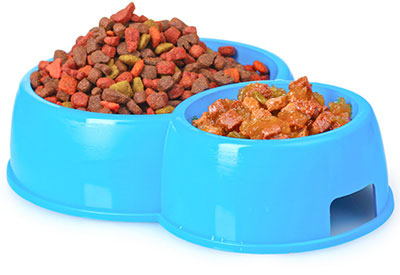
There is a reality when it comes to commercialized pet food. No matter how healthy the ingredient list, no matter how many bad ingredients are missing from the list, and no matter how organic it is, if it comes from a can or a bag and it has been heavily processed, then it is a far cry from natural food. We can rationalize all we want, but fresh food is fresh food. Processed, commercialized pet food is processed, commercialized pet food that is not fresh. And if it contains meat that is not organic or pasture-raised, then that meat comes from factory farms and likely contains antibiotics, growth hormones, steroids, and other undesireables.
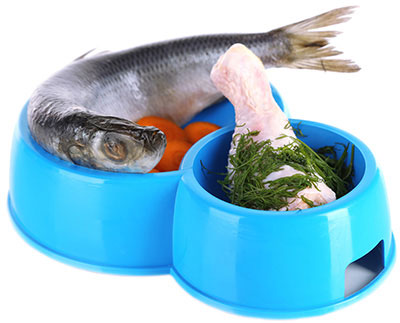 Similar to processed human food, because processing food destroys its nutritional value, manufacturers have to "add back" the nutrients using synthetic lab-made version of the nutrients. This process is called "enriching" and "fortifying." Fortifying means that the added nutrients were not there to begin with - they are synthetic "add-ons." If a food is enriched or fortified, it typically means it has been processed to the point where it has become nutritionally deficient.
Similar to processed human food, because processing food destroys its nutritional value, manufacturers have to "add back" the nutrients using synthetic lab-made version of the nutrients. This process is called "enriching" and "fortifying." Fortifying means that the added nutrients were not there to begin with - they are synthetic "add-ons." If a food is enriched or fortified, it typically means it has been processed to the point where it has become nutritionally deficient.
Whether feline, canine, or human, the body recognizes the difference between nutrients from nature and those that are isolated and artificial.
Work Within Your Budget
When it comes to high quality pet food, there is a reality. Healthy pet food is expensive! It may not be possible to feed your pet what is biologically appropriate all the time (fresh meat and fish) unless you have the funds. So where does that leave a pet owner who only wants the best for their pet, but needs to balance the food budget?
The great news is that you can make a significant difference in their diet (and health) by simply educating yourself on what to buy vs. what to avoid, and the right choices do not have to break the bank. Here's how:
Choosing the Right Diet
When it comes to choosing the right type of food, there are 3 main choices:
What's the Deal with Grains?
Many pet food manufacturers are now using grains and vegetable proteins instead of meat proteins. Dogs and cats are carnivores, and from a biological standpoint they thrive on a meat and/or fish-based diet. Grains are not and have never been an appropriate main food source for them. Why has the use of grains, "gluten meals," and starchy vegetables (such as potatoes) risen so dramatically in pet foods? Simply because these ingredients are cheap. They also help hold commercial kibble together. Pet food high in grains and vegetable proteins are pet foods poor in nutrition.
The type of grains in human and pet food products today are very different from the grains used in traditional cultures which were simpler, non-hybridized, and not genetically modified. Not only are then now genetically modified, but they are high in pesticide residue, and sometimes irradiated. Because of these issues, we have what is being called a "gluten epidemic" which not only affects human health, but pet health too.
Why the sudden gluten epidemic?...
Pet Food & Allergies - What's Going On?
Similar to us humans, our pets now have food sensitivities to all sorts of ingredients including chicken, beef, eggs, lamb, rice, barley, or any other food that you can think of. Food allergies are very often the culprit when a pet experiences skin problems. Some dog foods claim to be “hypoallergenic” or have statements such as “contains no allergens.” But the truth is that any food ingredient can be an allergen. The only way to identify and eliminate the offending item is to feed a very simple diet of different food types to find out which food is causing the problem.
That being said, the offending item is usually ingredients that should not be in pet food to begin with, namely:
- Soy (typically GMO)
- Corn (typically GMO)
- Grains (typically GMO)
But wait? Why are many pets now experiencing a reaction to proteins such as:
- Beef
- Dairy
- Chicken
- Lamb
- Fish
Once we learn about how the quality of meat has degraded in the US, it should come as no surprise that more and more pets are developing reactions to this meat, just as we humans are. The meat we feed our pets is not the meat of the olden days, and is very different from what we think it is. Most meat in commercial US pet food is from factory farms. This means it contains antibiotics, growth hormones, steroids, and medicated additives. Why is 80% of the US supply of antibiotics used by the agricultural industry? Because factory-farmed animals are often the subject of horrific abuse and animal cruelty, and are raised in deplorable and unsanitary conditions.
Factory-farmed animals are also fed an inappropriate corn or soy-based diet that is genetically modified. A sub-optimal diet for farm animals leads to lower meat quality.
Factory farming is illegal in many countries for these reasons. Until this practice is also banned in the US (let's not hold our breath), factory-farmed meats have no place on our tables or in our pet's bowls. Meanwhile, expect to see adverse reactions continue to rise in pets that eat these products.
The answer to this problem is to avoid purchasing factory-farmed meat. Look for pet food that contains either organic or pasture-raised meats, and seafood that is wild caught.
How to choose meat responsibly...
RELATED ARTICLES
- Why pets are getting sicker
- Healthy & balanced pet diet
- Tips on choosing a healthy pet food
- Home-cooked diet
- Raw food diet for pets
- Doing raw right for pets
- Home-baked doggy treats
- Bones - nature's toothbrush
- Bone broth recipe
- Pet food recalls
- Treating common pet injuries
- Pet-proofing your home
- Preparing for a new pet!
- Fleas, ticks, & mosquitoes
- Natural dog grooming
- Pet dental care
- Pet vaccinations
- Declawing




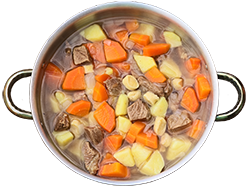 More and more people are now turning to home-cooked diets as a result of thousands of pet food products recalled over the past 10 years. Home-cooked pet diets are not nearly as complicated as some people think they are. They also offer some big benefits:
More and more people are now turning to home-cooked diets as a result of thousands of pet food products recalled over the past 10 years. Home-cooked pet diets are not nearly as complicated as some people think they are. They also offer some big benefits: